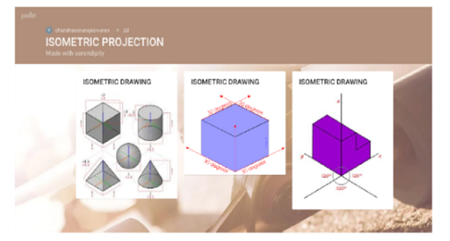


Indian Journal of Science and Technology
Year: 2021, Volume: 14, Issue: 19, Pages: 1574-1579
Original Article
M. Chandrasena Rajeswaran1*, D B Jabaraj2
1Professor & Head, Department of English, Dr MGR Educational and Research Institute (University with Graded Autonomy Status), Chennai, Tamil Nadu, India. Tel.: 9840556559
2Joint Registrar (E&S) & Professor, Department of Mechanical Engineering, Dr MGR
Educational and Research Institute (University with Graded Autonomy Status), Chennai, TamilNadu, India
*Corresponding Author
Tel: 9840556559
Email: [email protected]
Received Date:01 February 2021, Accepted Date:26 April 2021, Published Date:29 May 2021
Objectives: To enhance the first-year engineering students’ conceptual understanding of Basic Engineering Graphics. Methods: The mixed research was observational and unpaired; it was done during January 2020, as an interdisciplinary collaborative project between the departments of English and Mechanical Engineering. It involved two English language teachers, two mechanical engineering teachers, and seventy-first year B.Tech students of Dr. MGR Educational and Research Institute, Chennai. A pilot survey helped teachers understand students’ difficulties in learning Engineering Graphics; so different approaches like the bilingual, content and language integrated learning and the project-based content instruction with videos and Flipped learning through mobile assistance were introduced. Students watched videos on isometric projections and drawings in their mobile phones. They checked their understanding of them with the text book reading in peer company. The classrooms were utilised for peer discussions and teachers’ clarifications. Findings: The project as a group activity offered scope for peer interaction that the students were cognitively stimulated for better understanding of isometric projections. A post evaluation of the drawings, presentation by the students and a post interview found the bilingual and Content and Language Integrated Learning approach has stimulated the cognition of the net-generation learners while exploiting their interest in the mobile phones through flipped classroom. The process of learning exemplified the principle of cooperative learning among students and the cooperative work of teachers of different disciplines (i.e.) subject and language teachers. Novelty/Applications: Teaching engineering graphics with the assistance of language teachers and in a flipped classroom was a novel approach.
Keywords: Engineering graphics; isometric projections; content and language integrated learning; Flipped learning
© 2021 Rajeswaran & Jabaraj. This is an open-access article distributed under the terms of the Creative Commons Attribution License, which permits unrestricted use, distribution, and reproduction in any medium, provided the original author and source are credited. Published By Indian Society for Education and Environment (iSee)
Subscribe now for latest articles and news.